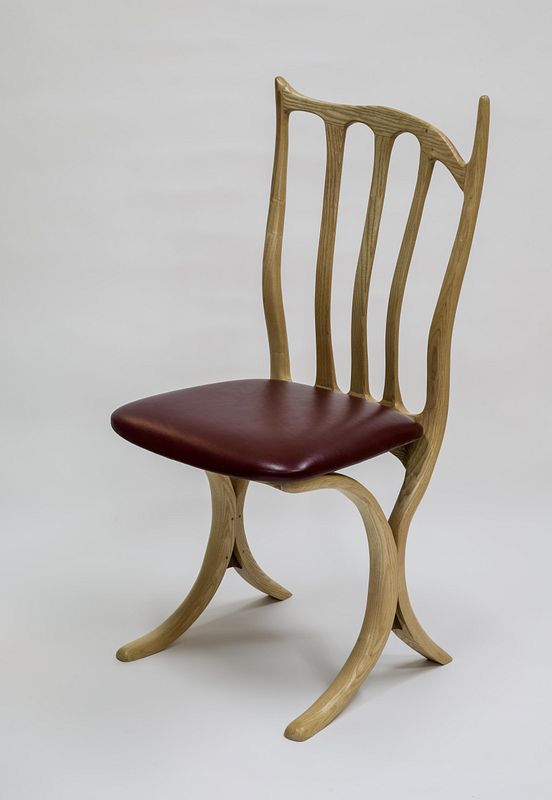Interesting project. I don't know if this is your first chair or your hundredth, so if I'm teaching granny to suck eggs then ignore, but a couple of thoughts that may be relevant.
-Back slats or back bars are rarely easy, but there are some techniques that help. The key problem is getting really tight, gap free, glue lines where they joint into
both the back seat rail and the crest rail, this is tricky because by this stage you're often off from the rod or plan by a mill or two, also there are often angles or compound angles that complicate the situation. One option is to construct them as a blind tenons and make the mortices a bit deeper than necessary, that way they'll "float" and take up any slack. The other option, which personally I prefer as it's neater, is to make the crest rail "float" by making the mortices in the back legs about 3 or 4 mill wider than the tenons in the crest rail. This allows you one or even two rounds of scribing the shoulders of the tenons to achieve a perfect fit. If it's a Stickley style chair then I'll assume the back bars are fairly straight. If so this massively simplifies the glue up as you can run some light sash cramps from the crest rail to the back seat rail to bring the joints up tight. If the back bars have significant curves you may need to make a jig/fixture to bring pressure to bear where it's needed. That can get pretty involved as in these arrangements,



In any event the best way of proceeding with the glue up (especially if you're using quick setting PVA) is to glue up the back bar/crest rail/back seat rail assembly, only loosely attaching the back legs to keep everything true (i.e. no glue), then glue up the back legs in a separate operation. If I'm honest I often chicken out and use a slow setting UF glue even though I was taught that UF glue is to be avoided like the plague on chairs as it's too rigid and won't soak up the flexing that chairs are subject to.
-Attaching arms is normally done in one of two ways. With the front legs extended and the arm anchored directly onto them. Or with a separate component that joints into the side rail. There are advantages with both methods. By extending the front leg as you propose the job is
slightly simplified and it's
slightly stronger, but (there's always a "but" isn't there!) the seat needs to be about 50-75mm wider at the front or else it makes for a very restrictive experience for the user. Sometimes the aesthetic of the chair doesn't allow for this, or you want the chair narrower to squeeze more chairs around a table. Then you have no choice but to anchor the arm onto the side rail via another component, and jointing that component into the side rail can be a bit of a pig as you'll normally use a big, thick sliding dovetail that needs to be bang on accurate if it's to last and fit correctly.
-The wide, flat arms that you're proposing will make the chair wider still (they're generally flush on the inner surfaces so all the extra width is outboard), and the issue as you've correctly identified is that then the outer edges of the arm cantilever out in space. Given that people generally press down on the arms as they raise themselves out of the chair this needs to be pretty sturdy if it's going to last. Personally I wouldn't use the method you've suggested (a supporting component beneath the arm) as it won't address the cantilevering problem. Just my opinion, but I'd use a corbel, certainly one fastened to the front leg, maybe even a second fastened to the back leg unless you taper the arm thinner at the back. If you google "Morris Chair" you'll see how this arrangement works.
Good luck!









































